Sunday 14 October 2018
Friday 21 September 2018
Subash palekar and Spiritual Farming
Most of the people might be knowing Subash Palekar who is popular in organic farming.
The reason why the ZBNF is also known as Spiritual Farming.
Subash Palekar Words:
Nowadays chemical farming became popular. To become self reliant we allowed countries who manufactures agro chemicals to sell in our country in the name of Green revolution. The people who use chemical farming thinks that the soil is not fertile and to make it fertile we need to dump some fertilizers from outside. But this is not true - says Subash Palekar
See Forests, here plants or trees grows. No need of tilling, no addition of fertilizers, insectides or irrigation. This means there is need of things from outside and nature gives all ingredients needed for the plants or trees to grow. And thus he calls ZBNF as Spiritual farming which is mainly concentrated on sustainable farming. Scientists say that Everytime the soil will not be fertile, so that there is a need to add fertilizers to the land to make it fertile. But this is also not true. Now coming to the production yield using chemical fertilizers. The yield using chemicals have decreased which was also agreed by the agronomists. says Subash Palekar.
The main five inputs like to suggest in organic farming are composting, vermi composting, biodynamics, m - solution and garbage solution. As time takes longer for the production the price is as high as five time greater than the price of chemical farming. He also says that his five layer model is one which is inspired by Forests.
Coutesy : Times of India
Monday 17 September 2018
ABCD farming Andriod app
Tuesday 4 September 2018
Growing Corn for Popcorn
Thought to start a small business. 3 basic Aim of my business.
1. Business need to be Agriculture Related.
2. Need to be grown and processed by ourselves.
3. The people in every age need to like the product.
4. The cost of the product should be Low.
5. Should be easily delivered.
Thought of Popcorn, as it satisfies all the Five basic aims. At this period, Looking to take up the survey with the people. Need to analyse what the people are thinking. If the Popcorn business is started, need to analyse the sales.
Wednesday 29 August 2018
Community Supported Agriculture in India
Community Supported Agriculture
CSA Stands for Community Supported Agriculture. CSA allows city residents to have direct access to high quality, fresh produce grown locally by regional farmers. When you become a member of a CSA, you're purchasing a “share” of vegetables from a regional farmer.In most of the Countries CSA is implemented and was running successfully by the farmers. One of my collegue where i met him at Annadana has started a CSA in Italy. You can visit their page. https://m.facebook.com/camasarot/
- Where they grow food in Raised beds. (To know about Raised bed Farming click here)
- No tractors are used.
- They use simple hand tools like seeder, wheel hoe for ploughing, weeder, etc..
While searching for CSA in India I came through Navadharshanam Trust near Thally road, Hosur taluk. Where they Work with Partnership with the Local farmers and Consumers. You can Visit there page here.
here is a good book where you can learn about creating and managing FPO About CSA
The Community Supported Agriculture (CSA) is a partnership between the Growing farmers and the consumers where the profits and loss in the farming is shared.
How to Plan ?
- For the Delivery of the vegetables to the consumers, farmers need to plan up for the pickup centres where consumers will get their shares once a week or twice a week.
- The consumers has to choose the requirement of the vegetables, greens, fruits, at the time of registration.
- They can choose to get a basket of 4-15 kg Mixed vegetables and 2-5 bunches of Greens every week.
- The Local Farmers need to plan accordingly to Grow the quantity of vegetables and greens Ordered by consumers.
Friday 27 July 2018
How to know whether your vegetables are organic or chemically grown ?
Courtesy: DNAINDIA
Appearance
If it is naturally and organically grown, no two items will look identical... ever! It's just not possible to find two things that look absolutely alike in nature. No two leaves of the same mango tree will ever look 100% alike. Similarly, each apple, mango or even grain will always look different from another. Their colour, shape, structure will never be uniform. There will, for instance, be different shades of yellow in your moong dal instead of the uniformly bleached yellow of the regular packaged dal.
Size Up
Fruits, vegetables and grains won't be huge in size. So while it is okay to go "ooh aah!" over huge potatoes, tomatoes, cabbages, eggplants, cauliflower, capsicum and the humble lauki, or bottle gourd, it is better not to transfer them to your plate. There are, of course, special cases in which people do grow large-sized fruits and vegetables organically as well, but they are not the norm and are difficult to find.
Your Insect Friends
Keedas (worms) in your grains are actually good news. Naturally grown sabut daals (like moong sabut, or urad sabut), atta, maida, brown rice, white rice and other grains will get keedas after two-three months and especially in the rains... because keedas too know that non-organic food is just not edible. So don't jump up and down when you see the worms; all you need to do is wash the grain or sun them out like our grandmothers would and still live on to a 100 years. Keedas don't contaminate your food, pesticides do. Similarly, if you see a few holes in the leaves of the greens you are buying, pick up the bunch; it means it is not heavily 'pesticided'. And one rule of thumb to follow with greens is this: after washing them well, give a final rinse of salt water for two-three minutes. This helps remove germs and residue.
Tasty
Natural is just tastier. When you cook organic vegetables, you will realise that you need less spices as there is so much natural flavour. Similarly, organic fruits are juicier as they are allowed to ripen on the tree. Otherwise, fruits are usually plucked when green and then gassed to ripen and increase shelf life. In the case of a banana, your taste buds will speak up because the pesticide fruit has more water due to the spraying of acetylene gas. Unfortunately, most mangoes today are artificially ripened and apples have the maximum pesticides. The adage 'an apple a day keeps the doctor away' is actually only for organic apples.
Healthier
Organic feels healthier, is far lighter on the digestive system and also helps reduce acidity and gas related GI issues. You will feel a perceptible difference soon enough.
The Smell Test
The aroma and texture of organic food is totally different — very potent, in fact. Organic spices, for instance, will have a strong aroma and flavour as they retain their oil content. In non-organic spices, the oils have been extracted and sold separately so they are devoid of any oil. Plus they are usually adulterated, so you need to use more to get the same result. Try ajwain/laung/zeera... just eat it raw and you'll know the difference. Your tongue will have a strong sensation after half a teaspoon of organic ajwain. Similarly, organic apples have a divine fragrance; keep a crate of organic apples in the house to find out. One problem though is that industries now do a good job of recreating the original smell. The smell of pure ghee, for example, is added in the lab. Some just add the fragrance to make you think you are buying pure ghee, whereas you could actually be buying something totally nutritionless and worthless. So be careful.
Cook Faster
Organically grown food always cooks much faster; in fact if you are a multi-tasker, be careful as you might just burn the dish if you go out to peep in the garden while it is cooking. Food with pesticides needs to be cooked for much longer periods.
Certification
Though not a norm in India yet, sometimes fruits and vegetables meant for exports do land up in the local market and have a sticker on them that can be checked. (4 digit PLU — price look up code the sticker basically means grown with pesticides; 5 digit codes starting with 8 means GM grown, 5 digit codes starting with 9 means organically grown. In India, we basically have the regular 4 digit PLU which indicates that it is grown with pesticides).
Shelf Life
It is a myth that organic fruits and vegetables spoil faster; stored in a refrigerator they last for a long time.
Wednesday 16 May 2018
An Article on Thannal Hand sculpted homes
Biju Bhaskar is promoting the concept of
natural building through his venture, Thannal
Architecture does not just entail the construction of a building, but it is the setting up of a philosophy, thought process, values, and ideals. While conventional architectural models may be an inanimate block of concrete and cement that are ‘finished’ at the end of the erection; there are, however, alternate forms of edifices that are more alive through their symbiosis with nature. And Thannal is one such body that works for the assimilation of nature with human dwellings.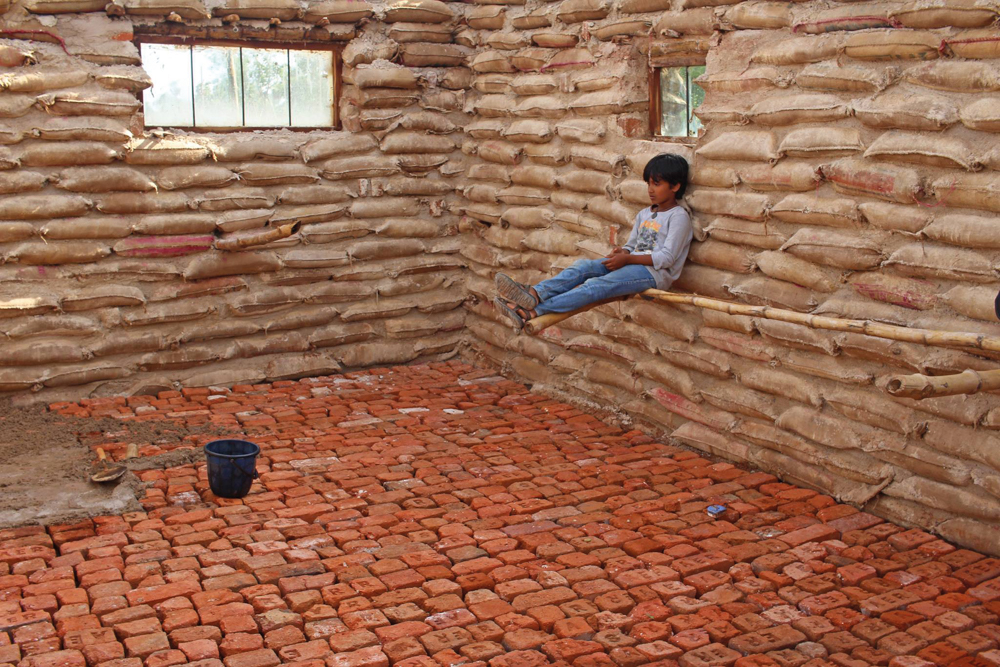
Biju Bhaskar worked in regular architecture for a long duration before quitting it ten years ago. He started Thannal in 2011 with the objective of trying to explore alternative architecture, which consists of green, sustainable, traditional, and vernacular architecture. “We do not compare our works with architecture, but we call it natural building. It’s a term that’s not well-known in the media. The natural building movement is gaining momentum internationally, but is not that progressed in Kerala,” he says. “We have to rethink the subject of mud architecture, which is in practice in Kerala currently, about whether we are doing it through pure sustainable methods,” says Biju, who specializes in mud architecture and operates in the village of Thiruvannamalai in Tamil Nadu.
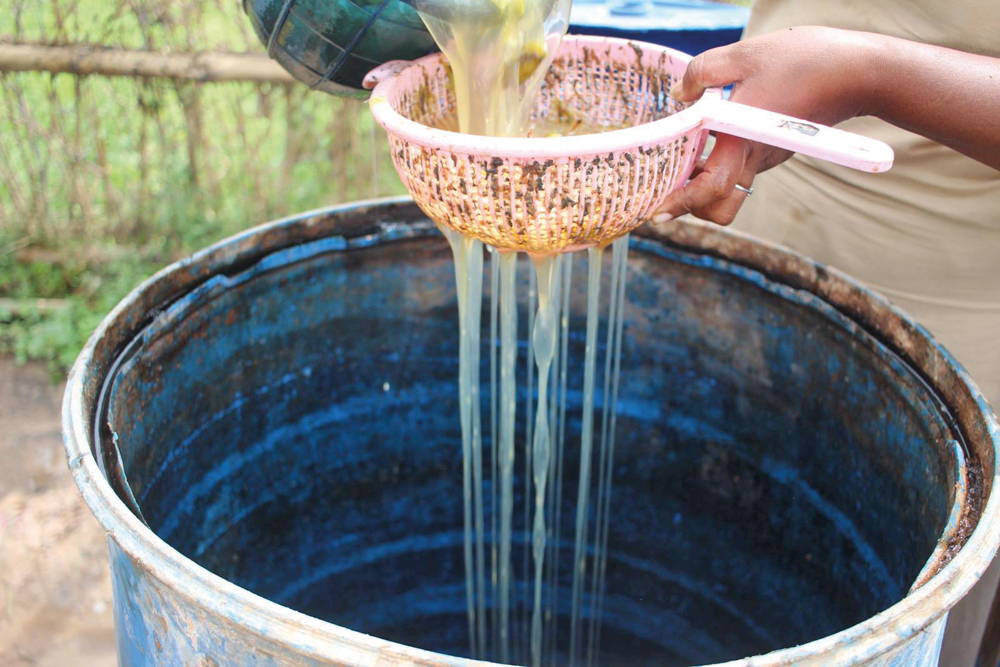
Building homes was a community-based activity where if you wanted to build your home, your friends, family, neighbors – everyone – came to help you; but today that’s not the case, and one takes huge loans to build their homes. “Kerala is a state that has a large population belonging to the high-income group, so there is a huge potential of using your money to build your home sustainably,” observes Biju. “In the current architectural scenario in Kerala, none of the materials used in building homes is from your native land. Some of the others who proclaim building mud homes are not doing it through pure natural methods, as they are mixing cement with the mud, which lessens the quality of the mud.”
The beauty of mud building is that it can be built for anyone, rich or poor; the difference comes only in the finishing, says Biju. “It has been only 90 years since cement came into Kerala, and today we are in a stage where people think that they cannot do without it. But don’t we see buildings that are over a hundred years old that are still going strong – temples, churches, manas, etc.? The concrete buildings of today can last only about 20 years before cracks start developing in it. No concrete building has completed 100 years in Kerala.”
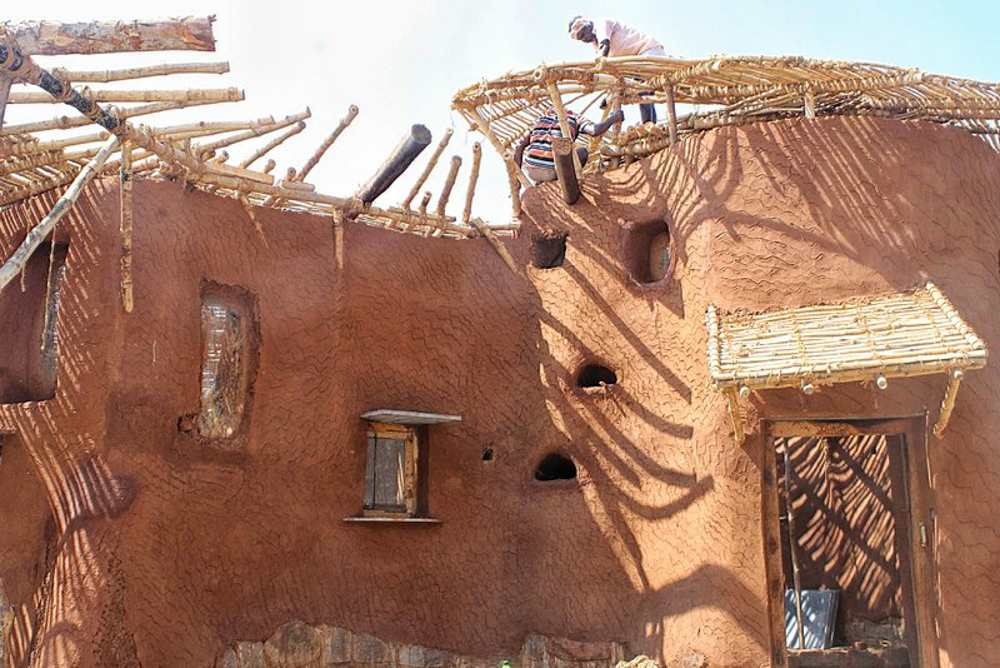
A building’s walls are like the skin on your body – they are porous and have a breathing quality, says Biju. Only the buildings of olden times had such walls and construction; they kept the building naturally cool. “Today’s buildings don’t have such a quality, and instead make the interiors of the building hot. Enormous power is used through air-conditioning to keep it cool.”
Another focus area for Thannal is the communion of plants and buildings. “In our research, we have found that plants have a lot of importance in buildings. The bark and sap of plants can be used in various ways in the construction of a building.” And there is no bigger example for this than Biju’s own abode, which is an earthbag home. “It has about 12 varieties of herbal ingredients in it. So the air that passes through the walls is diluted with the essence of these herbs.” Biju points out that cement companies today are one of the major sources of air pollution. The paints used nowadays are also mixed with toxins that are dangerous to people’s health.
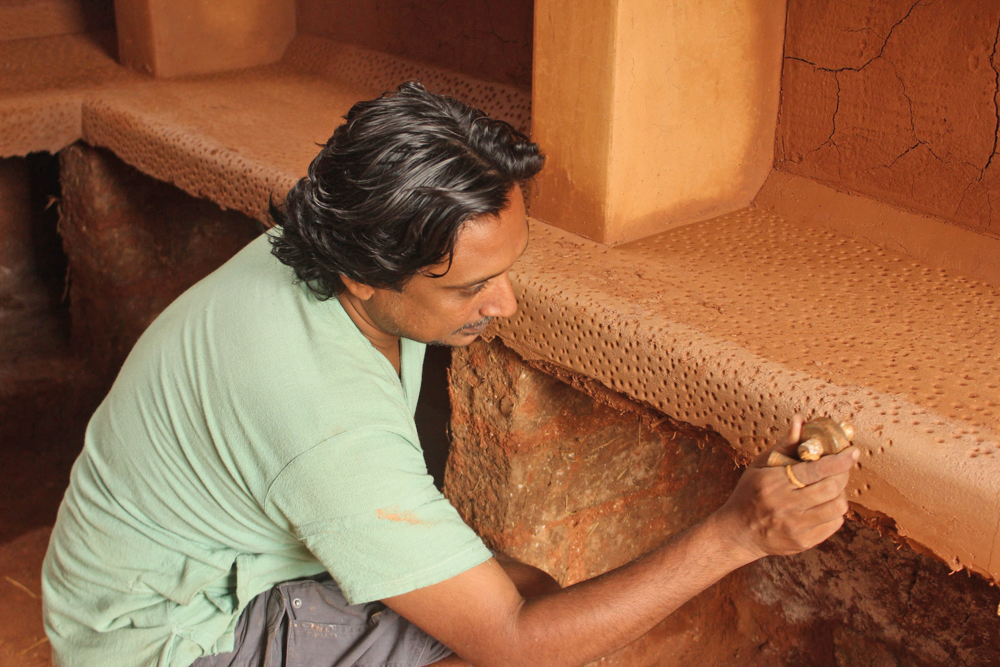
Biju says that there are a lot of positive changes happening in India and with the younger generation of architects for the past ten years. “The green movement in agriculture – organic farming, is coming along very well, what with the involvement of renowned people such as the actor, Sreenivasan. A lot of farmers come to meet us.” But at the same time, Biju rues another fact. “What is saddening is that villagers are lured by the urban living styles and moving towards it, discarding their natural means of life. So we are building free homes for them to bring them back to it and make them realise the importance of it.”
Biju talks about his philosophy at Thannal. “We believe that instead of growing more towns, we should grow more villages because today, the times have changed, and one need not live in an urban scenario for sustenance. Villages and pure natural building should thrive.”
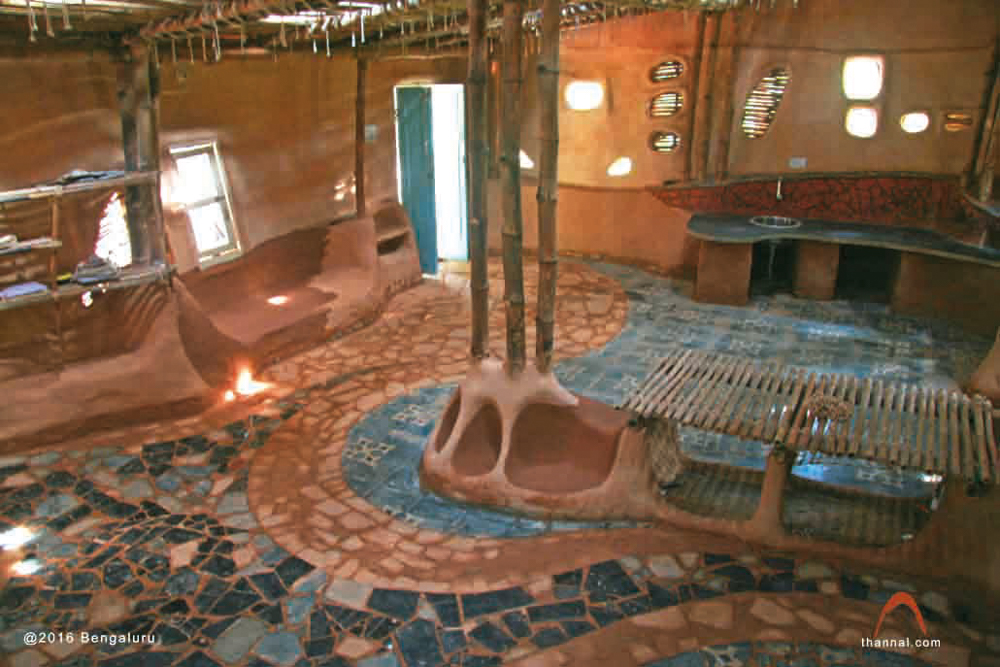
Biju takes up only a maximum of two or three projects in a year. Receiving volunteers from all over India, their income is only from the workshops that they hold, claims Biju. A naturally built home of 500-1,000sq ft can be completed in four to five months. The costs, naturally, are always lower than conventionally built structures.
Biju is an avid traveller and a devotee of Ramana Maharshi. Asked why he chose to settle in Thiruvannamalai, Biju says, “It is a place of gurus and a place for self-enquiry. It is one among the Pancha Bhoota Sthalam, and is symbolic of fire. And all gurus have taught that one should build mud houses.”
Friday 29 December 2017
ABCD FARMING ON GOOGLE
The land ploughed thoroughly. where my father helped with this land preparation. The water drained in the pathway of Lake. Ready to put pipeline. but it still takes another Fifteen days.
Just confused between methods to undergo. whether to take market gardening or mono farming.
However planning to build a cob house which will be used as a mini party hall. I like use locally available materials.
Looking for some innovative ideas to be self sufficient...!
Thursday 14 December 2017
Everything is happening for good.
I got the job which i thought. Now i can be a part time farmer. I can work in fields from early morning to 10 AM. And then i have a good job in a reputed company 12 noon to 8 PM. flexible time to work. By god's grace everything is happening Fine.
NOW IN FIELDS
_______________
Eucalyptus trees are chopped off.
Roots are sold, and the land will be levelled within 2 to 3 days.
2 months before it rained heavily. due to that our village storage lake has been filled.
And also the pathways are filled. due to that we would not able to install pipeline from my brothers borewell to my land.
Expecting that the water in the pathway will be drained before the end of january.
FUTURE PLANS
----------------------
Thinking of to build cob house in the farm whether the wattle and daub type or Adobe type.
Little bit confused whether to do MONO culture farming or to adapt MARKET GARDENS.
The land is about 80 cents. looking to make 180 raised beds which is 1M width and 10M length.
Like to follow permaculture (no till farming and organic) no usage of chemicals.
Looking to grow foods in organic way.
Wednesday 13 September 2017
Siitlingi - Self Sufficient Living
Self sustainable people
Sittlingi valley, a tribal settlement in Tamil Nadu, is today an
amazing example of how a system of beliefs, well-intentioned people,
and patient, sustained hard work can help a community seek its own
solutions for life improvement.
I have always been interested and intrigued by the colourful
handicraft work of rural artisans. A call for volunteers to help an
artisan collective called Porgai and a chance meeting with Dr.
Sukanya, trustee at Tribal Health India (THI), an NGO that worked in
the Dharmpuri district of Tamil Nadu,for a sustainable tribal welfare,
took me right to Sittlingi valley, amidst the scenic Nilgiris
mountains, to meet and understand the people behind the weaves.
THI_waitingarea
Community based healthcare. The waiting area outside the THI hospital
A 5-hour drive from Bangalore through the Hosur – Krishnagiri – Salem
route, Sittlingi is a land of tribals, the local Kalrayan people as
well as the Lambanis, who have migrated here from from Rajasthan,
Andhra Pradesh and other parts of India.
A valley that can take care of itself
Nestled between two hill ranges – Kalrayan and Sitteri, Sittlingi was
once a back of beyond place with no roads to connect villages with the
nearby towns. For any medical consultations or even emergencies, the
tribal folks living here had to travel by foot through the surrounding
forests to reach either Salem or Dharmapuri.
The arrival of the doctor couple, Dr. Reji and Lalitha, changed the
face and fortunes of Sittlingi. Over the last 16 years, the doctors
have worked not only to establish a tribal hospital at Sittlingi, but
also in helping the community maintain good health, re-vitalize their
farming practices, preserve their culture and ensure that they are
self-sustained.
An earlier piece on The Alternative talks about how the health and
lives of the tribal folk has changed for the better after Tribal
Health Initiative was set up here. My effort was to go find out what
next and what the valley looked like today.
THI_solar
Solar panel installation provide renewable power in the Kalrayan hills.
Tools in the hands of the people
Sittlingi, with the help of THI, proves how all it takes is a bunch of
simple, well thought through initiatives to ensure that a village can
bring life improvement for its people. Sittlingi has implemented
– A yearly insurance scheme for elders, where each of them pays Rs. 30
for a year, which includes hospital admissions, treatment, food, stay
and every expense incurred at the hospital.
– Low cost medicines, procured from LOCOST, a drug manufacturing
social enterprise a Baroda, with drugs costing almost 1/4th to 1/10th
of the MRPs at local pharmacies.
– Community health programs where doctors and health workers travel to
the villages to speak to people and spread awareness of the various
diseases
– An incinerator to take care of the huge amount of medicine waste
that is generated and can become a bio-hazard for the area.
– Provisions for the local patient attendants to cook their own food
if they preferred.
– Solar panels used for storing energy and to act as power backup.
Providing high quality healthcare in the hill district is Dr. Ravi,
who decided to settle back in Sittilingi after travelling around the
world with his wife (who holds an MSc in Nursing) and their
three-year-old daughter. They have opened up a little training centre
for the health workers at the hospital. A Delhi-based architect and
his wife have decided to move down to Sittilingi to set up and run an
alternative school for the children of the local tribes.
A small community television box provides entertainment, news and
awareness during evening chai sessions with patient attendees and
visitors.
THI_TV
The community TV that beams awareness and entertainment programs at
the hospital.
The other side of progress
That progress and policy can indeed impact healthcare is visible when
one talks to Dr. Lalitha. When asked about challenges in helping the
people of Sittlingi sustain, Dr. Lalitha spoke of some interesting
developments that inadvertently became obstacles to be sorted out:
The road: A road built to connect Sittlingi with Salem enabled people
to travel easily and get a first hand view of what is happening in
bigger cities. Food habits changed based on what they observed in
other places, which saw a slow increase in health related problems.
Stop millets, grow rice: The farmers used to grow millets, well known
for their nutritional value, around the valley. Government policies,
aimed at the betterment of the poor, started introducing rice at Re. 1
a kilo, and then free rice for the poor. Farmers were encouraged to
grow cash crops to earn more and stop growing millets. The downside?
There ended the track leading to good health.
The push towards instutional delivery: THI doctors encourage
deliveries at the homes of the tribal people, assisted by health
auxiliaries and doctors if and when necessary. This ensures good
health of both the mother and the baby after birth, thus reducing the
infant mortality rate. Here again, introduction of incentives by the
Government – Rs. 12000 to the mother if the child is delivered in a
PHC, when the PHCs have poor facilities here and no qualified doctors
or nurses – worsened the problem.
No permanent job: The farmer works 4 months in a year on his farms.
For the remaining 8 months, in the absence of a daily wage or income,
he is forced to migrate to other cities and towns. This has the
fallout of introducing new diseases that farmers tend to catch due to
their travels. For e.g, tuberculosis was unheard of in Sittilingi due
to environmental conditions, until the migration to other places
happened. People came back to the valley with such diseases.
THI_Porgai
Bags, jewel cases and other accessories made by the Lambani artisan
collective at Sittlingi.
Stemming migration
Porgai, one of the recent THI initiated efforts, translates to pride
in the language of the locals. To address the problems of health due
to migration, the doctors started to think about how to help people
stay back in their villages with a stable daily wage, so that they
wouldn't have go looking for jobs elsewhere 8 months in a year.
This led to reviving Lambani embroidery among the women that they have
always been conversant with. Dr.Lalitha helped them to be in sync with
the latest trends and colour combinations.
Going back to Swadeshi roots, another unique effort here has been to
encourage the people of Sittilingi to produce their own cotton, which
they use to weave and tailor into kurtas / tops etc; the women then
embroider these tops.
I came away from Sittlingi filled with admiration for the wonderful
work done here as well as a bunch of ideas and perspectives around
development. Sittlingi valley is today an amazing example of how a
system of beliefs, well-intentioned people, and patient, sustained
hard work can support a community that can aspire for a better life
and seek its own solutions to implement it.View our sitemap
Seasonal fruit calendar for South India
Fruits yielding calender
---------------------------------
Mango : April - July
Jackfruit : April - June
Wood apple : Apr - May. Someone said upto Aug/Sep
Grape : Nov-Dec (isn't it twice a year?)
Sapota : Sep-Nov (isn't it twice a year?)
Pomegranate : Mar-May (isn't it twice a year?)
Nerale (Jamun) : May-June
Orange : Nov-Dec
Guava : July-Sep
Amla : Oct - Dec
Custard apple : Aug-Sep
Avocado: Mar - Apr (have seen it later in Coorg)
Passion fruit : June/jul/ aug
Strawberries : Sep-Jan
Fig in six months : July to Aug. Later Feb-march
(Papaya, Banana, Water melon, Musk Melon etc is grown all through the year) View our sitemap
Saturday 2 September 2017
Make your own scottish oat cakes
Scottish Oat Cakes
1-1/2 cups Scottish Oatmeal (Rolled oats pulverized in a food
processor to a rough flour consistency)
1/2 cup Whole Wheat Flour
1 Tbsp Brown Sugar (Jaggery)
1/4 tsp Sea Salt
1/4 cup Butter if eating quickly or Butter flavored vegetable
shortening if storing for longer times , melted
1/2 cup Hot Water
Directions
Preheat oven to 325°F.
Place all but 2 tablespoons of the Scottish Oatmeal in a bowl with
flour, sugar, salt and baking powder; stir until combined. Add butter
and stir until evenly distributed. With a fork, mix in water, just
until moistened. Pat dough into a ball, and then flatten slightly.
Sprinkle reserved 2 tablespoons oats on a board. Roll dough out 1/4
inch thick. With a 2 to 3 inch round cutter, cut dough into rounds.
Re-roll and cut scraps. Place oatcakes about 1/4 inch apart on a
greased baking sheet.
Bake until Scottish Oatcakes are golden, approximately 25 minutes. Let
cool on a rack.
Enjoy plain, serve with jam or cheese, or use them to build hors
d'oeuvres, salmon.
Makes 12 Scottish Oatcakes.














